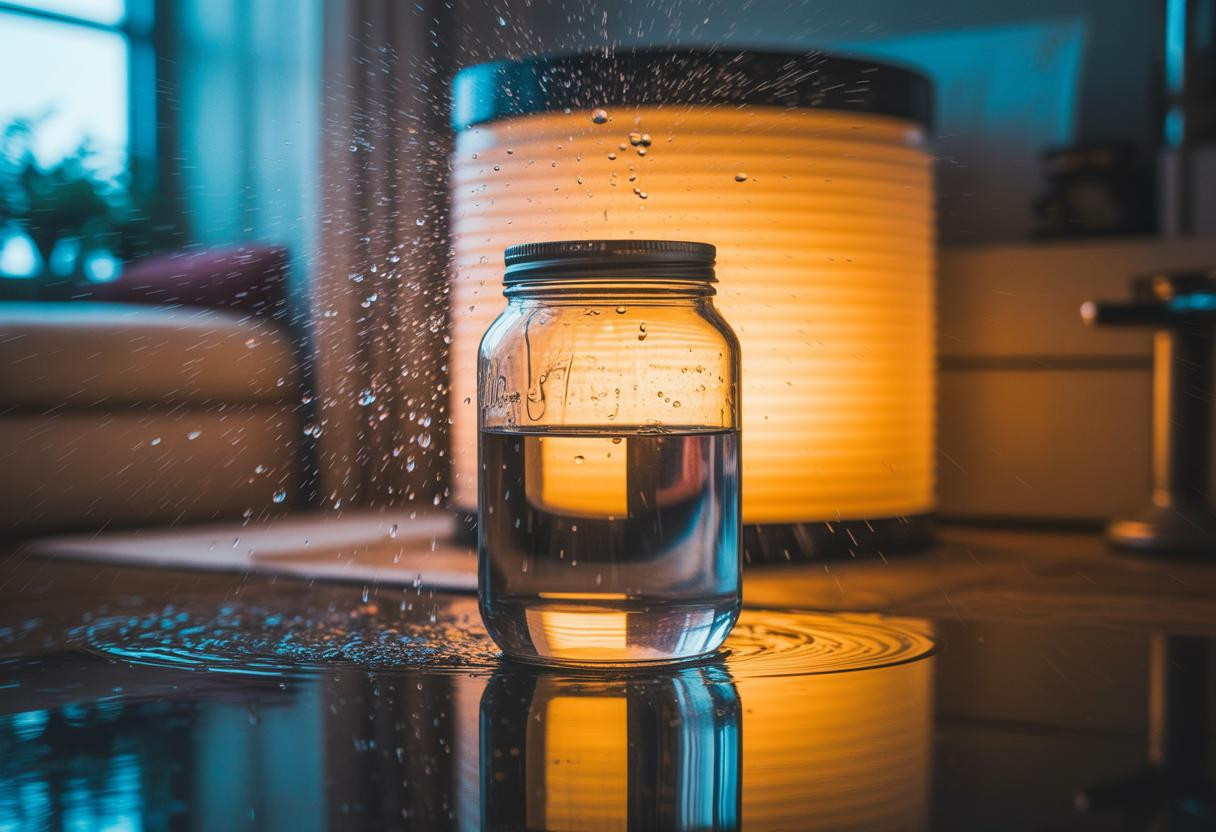Most homeowners struggling with excess humidity don’t realize that a simple DIY calcium chloride jar system can absorb up to 300% of its weight in moisture—dramatically outperforming expensive commercial dehumidifiers in targeted spaces. This “chlorure de calcium en pot” method transforms ordinary glass jars into powerful moisture-fighting tools that work continuously without electricity.
What makes this approach particularly compelling is its scientific foundation. Unlike silica gel packets that merely trap moisture on their surface, calcium chloride actually dissolves absorbed water through a process called deliquescence, creating an ongoing absorption cycle that becomes more effective as humidity levels rise.
The surprising science behind calcium chloride absorption
Calcium chloride operates on fundamentally different principles than conventional desiccants. When exposed to moisture, the crystalline pellets undergo an exothermic chemical reaction that generates heat while dissolving water molecules into a concentrated brine solution.
This process explains why industrial facilities and shipping containers increasingly rely on calcium chloride over traditional alternatives. Research shows that while silica gel absorbs only 10-27% of its weight in moisture, calcium chloride can absorb several times its own weight, making it particularly effective in high-humidity environments where other methods fail.
The thermodynamic properties create a self-sustaining cycle. As humidity increases, absorption accelerates, generating more heat that enhances the moisture-capturing process—essentially creating a natural humidity regulation system that adapts to environmental conditions.
Why commercial dehumidifiers struggle with targeted moisture control
Most electric dehumidifiers work by cooling air to condense moisture, requiring significant energy and struggling with localized humidity problems. The calcium chloride jar method targets specific problem areas—closets, basements, vehicles—without affecting entire rooms or consuming electricity.
This targeted approach proves especially valuable for preventing mold in confined spaces where traditional dehumidifiers cannot reach effectively. Many users report solving persistent moisture problems in areas where effective cleaning methods for household items had previously failed to address underlying humidity issues.
Creating your moisture absorption system safely and effectively
The basic setup requires only a glass jar, calcium chloride pellets, and a perforated lid or cloth cover. However, proper implementation involves critical safety considerations that many DIY guides overlook.
Temperature management becomes crucial because calcium chloride absorption generates heat up to 60°C. In enclosed spaces, this heat buildup can create unexpected problems or even safety hazards if not properly ventilated.
Professional moisture control specialists recommend positioning jars away from temperature-sensitive items and ensuring adequate air circulation around the absorption area.
Safety protocols that prevent common mistakes
Calcium chloride dust can cause respiratory irritation and skin contact issues, making proper handling essential. Unlike chemical safety concerns in household products, these risks are easily managed with basic precautions.
Always wear gloves when handling pellets and avoid breathing dust particles. Position jars where pets and children cannot access them, as ingestion causes serious gastrointestinal irritation.
Environmental considerations and sustainable practices
The resulting calcium chloride brine solution requires careful disposal to prevent soil salinization and water contamination. Many users unknowingly create environmental problems by pouring dissolved solution into gardens or storm drains.
Proper disposal involves treating the brine as hazardous waste or diluting it significantly before disposal in designated areas. Some municipalities offer specific guidelines for calcium chloride disposal, similar to sustainable home improvement solutions that consider long-term environmental impact.
Regeneration potential offers an eco-friendly alternative. Heating dissolved calcium chloride to 250°C can restore its crystalline form, though this process requires specialized equipment and energy considerations that may offset environmental benefits.
Maximizing effectiveness through strategic placement
Optimal results depend on understanding humidity patterns within specific spaces. Moisture tends to concentrate in corners, near floor levels, and around temperature differentials where condensation naturally occurs.
Position multiple smaller jars rather than single large containers to create comprehensive coverage. This distributed approach prevents saturation in high-moisture areas while maintaining effectiveness across varying humidity levels.
Why this method transforms moisture management
The calcium chloride jar system represents a fundamental shift from reactive to proactive moisture control. Rather than waiting for humidity problems to manifest as mold or damage, this approach creates continuous environmental monitoring that adapts automatically to changing conditions.
For homeowners seeking cost-effective, targeted humidity control without ongoing electricity costs, this scientifically-proven method offers immediate results that scale according to actual moisture levels rather than predetermined settings.
